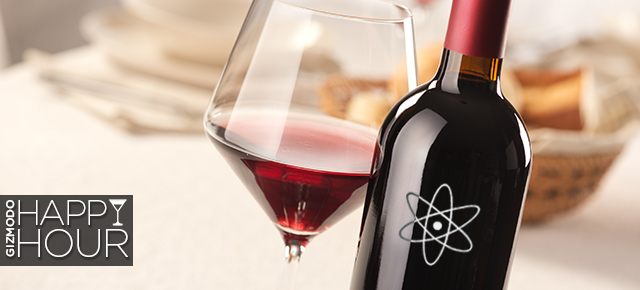As long as rich men are willing to pay exorbitant amounts for old, fermented juice, there will be schemers willing to dupe them out of their money. But if you’re dropping a cool half million on four bottles of wine supposedly owned by Thomas Jefferson (true story), you want to make sure you have the real thing, right? You can, thanks in part to the atomic bomb.
The art of wine forgery isn’t really about creating an authentic-tasting wine; the bottle is equally important. Collectors rarely crack open a bottle upon sale, and old wines can vary widely bottle to bottle after all those years. Plus, when it comes to wine, human brains are easily fooled by expectations. A quirk of nuclear bomb testing, however, means we can actually verify straight from the wine itself, without even uncorking it.
How About a Glass of Caesium-137?
When the US and other countries tested thousands of nuclear bombs beginning in the 1950s, the entire Earth got a light dusting of caesium-137, an isotope that rarely occurs in nature. It found its way into the air, the soil, grapes, and, by extension, into wine. Caesium-137 dating became an unexpected consequence of nuclear weapons, with some unexpected benefits. Take a bottle of wine — or a painting or ivory or pottery — and if you can find traces of caesium-137, then it’s a post-atomic age forgery.
Caesium-137 was first applied to wine forgery in the 1990s, when French physicist Philippe Hubert of the University of Bordeaux (where else, really?) was working with machines that could detect small amounts of radioactivity. In his lab beneath the Alps, he began testing wine for radioactivity.
But a whole bottle of wine — glass, label, cork and all — is a tricky thing to study. The first several bottles he tested, which came from well-known modern vintages, basically had to be destroyed to attain any useful result. The wine was burned into ash, which was then put into the machine. With these data, Hubert plotted the chart of 2010-era California wines.
“In the wine,” Hubert said to the BBC, “is the story of the atomic age.” To be fair, by that logic, anything in the world is the story of the atomic age — such is the pervasiveness of nuclear fallout.
Unmasking the Fraud
In 2001, Hubert got to put his test to the, erh, test. As Benjamin Wallace writes in this book The Billionaire’s Vinegar, the new millenium had brought an implausible number of 100-year-old wines on the market. Hubert was given six bottles each of Laftie 1900 and Margaux 1900 to test for caesium-137. This time, the (potentially) precious wine was poured into a container rather than burned for testing.
Even still, Hubert wondered if it was possible to detect caesium-137 while keeping the bottles intact. To his surprise, the gamma ray detector worked through the glass. He found that the remaining unopened bottles all had different levels of caesium-137, a sign of mixing different modern wines. The Belgian fraudster responsible was eventually arrested.
But Caesium-137 Isn’t the Whole Story
As Hubert’s reputation grew, he landed in the middle of what would be the biggest wine fraud case ever. In the late 80s, Bill Koch, brother to the two more infamous Koch brothers, purchased four bottles of 1780s French wine engraved with the initials “Th. J”, as in Thomas Jefferson. He shelled out about half a million.
But doubts began to swirl when Thomas Jefferson’s estate, Monticello, was unable to verify that the former president ever owned four such bottles. Jefferson himself was quite the wine connoisseur — “the presiding expert in French wine in this country” in the words of one historian — and a meticulous record-keeper to boot.
In 2005, Hubert was finally called in to verify the wine’s age, and his lab unable to find caesium-137 in the bottles. That didn’t necessarily answer the real or fake question though; the wine could have been bottled in 1784 or in 1940. There is no silver caesium-137 bullet when it comes to wine fraud, but investigators have a few other tools at their disposal, too.
You might, for example, put a bottle in a particle accelerator to determine the exact molecular makeup of the glass. Trace elements like manganese, used only between 1920 and 1957 when France controlled Moroccan manganese mines, can give a clue. Experts with knowledge about wine labels and inks can also spot fakes. In the end, the Jefferson wine forgeries — yep, they were fakes — were undone because the initials were engraved with a dentist tool or drill long after Jefferson’s time. Sometimes all it takes is a smoking drill, so to speak.
Often, though, spotting wine fraud requires piecing together several clues, individually fuzzy but converging on an answer. But seriously, most of us who don’t have thousands of dollars to drop on a single 19th-century bottle will never have to worry about this. A rich person’s problem if there ever was one. [NPR, BBC, The New Yorker, The Billionaire’s Vinegar]
